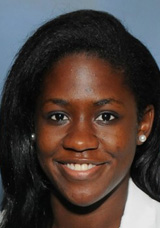
WHEP Scholar Leanna Brooks
Drexel University College of Medicine, Class of 2021
Athletes are usually associated with healthy lifestyles and lower levels of obesity. So, it may come as a surprise that a potentially dangerous medical condition can affect athletes much more than the general population. In the 1990s, experts in sports medicine noticed a pattern of three medical abnormalities in young female athletes: low energy availability, decreased bone mineral density, and menstrual dysfunction. In 1992, the American College of Sports Medicine coined the disorder the “female athlete triad.”
Most athletes know that females are more likely than males to suffer certain injuries due to their bone structure. However, the importance of nutrition for bone health is rarely stressed before college age. Female athletes may be suffering major injuries that could have been prevented by improved bone strength, nutritional knowledge and energy availability. Weakened bones increase the risk of injury and development of osteoporosis at a young age. Amenorrhea can increase an athlete’s risk of infertility and leads to decreased bone mineral density. Low estrogen levels can increase risks of endothelial dysfunction and put the athlete at risk for future cardiovascular issues.
More research about the triad needs to be conducted to examine the effects of nutritional knowledge and prior mental health issues on predisposition to the disorder. Screening for the syndrome should take place at pre-participation physical exams, and further testing should follow for any athlete with at least one component of the triad. The disorder should become public knowledge among parents, coaches and the athletes themselves. With improved overall awareness, we can help to decrease the prevalence of the female athlete triad in the future and help keep our young athletes safe and healthy.